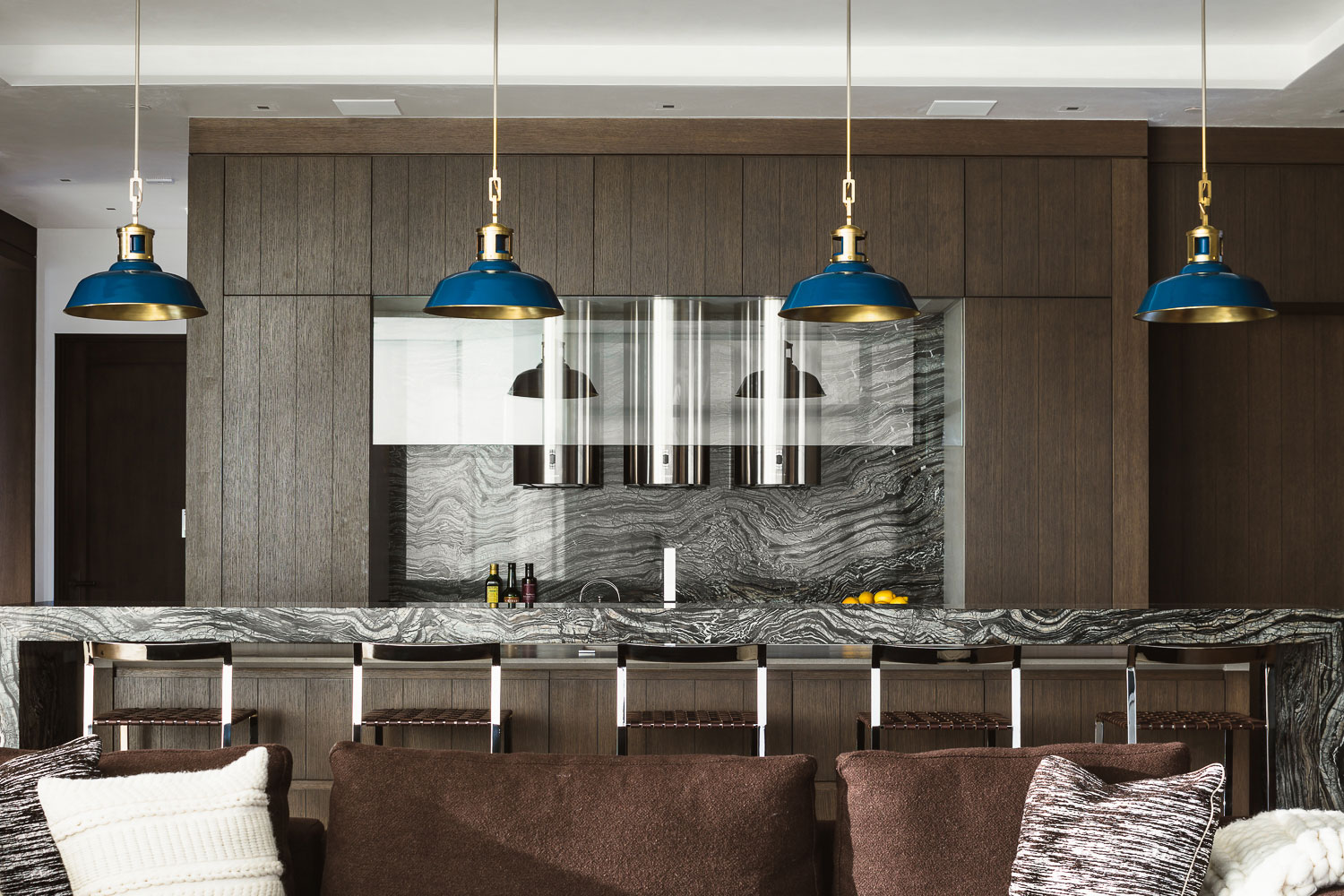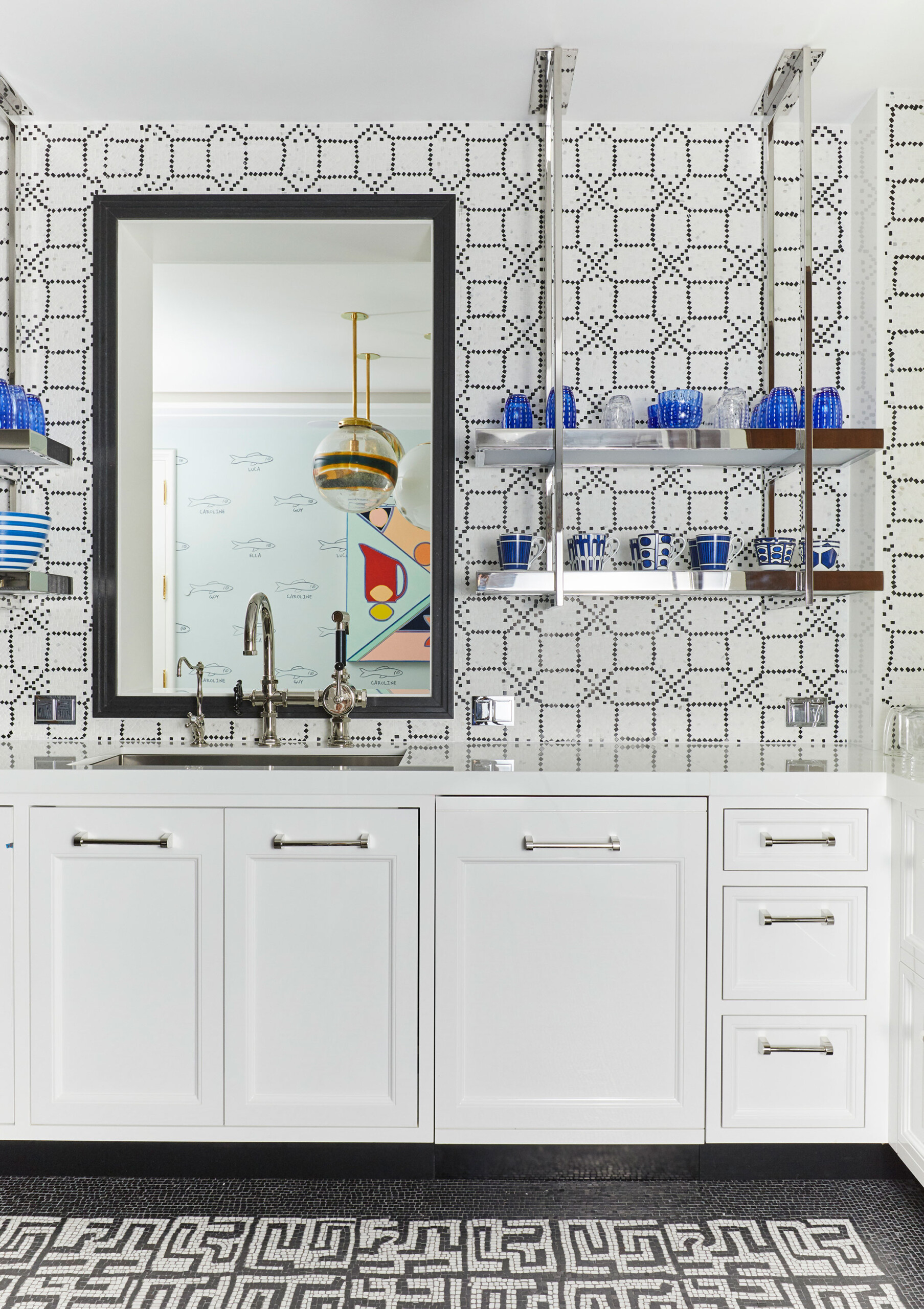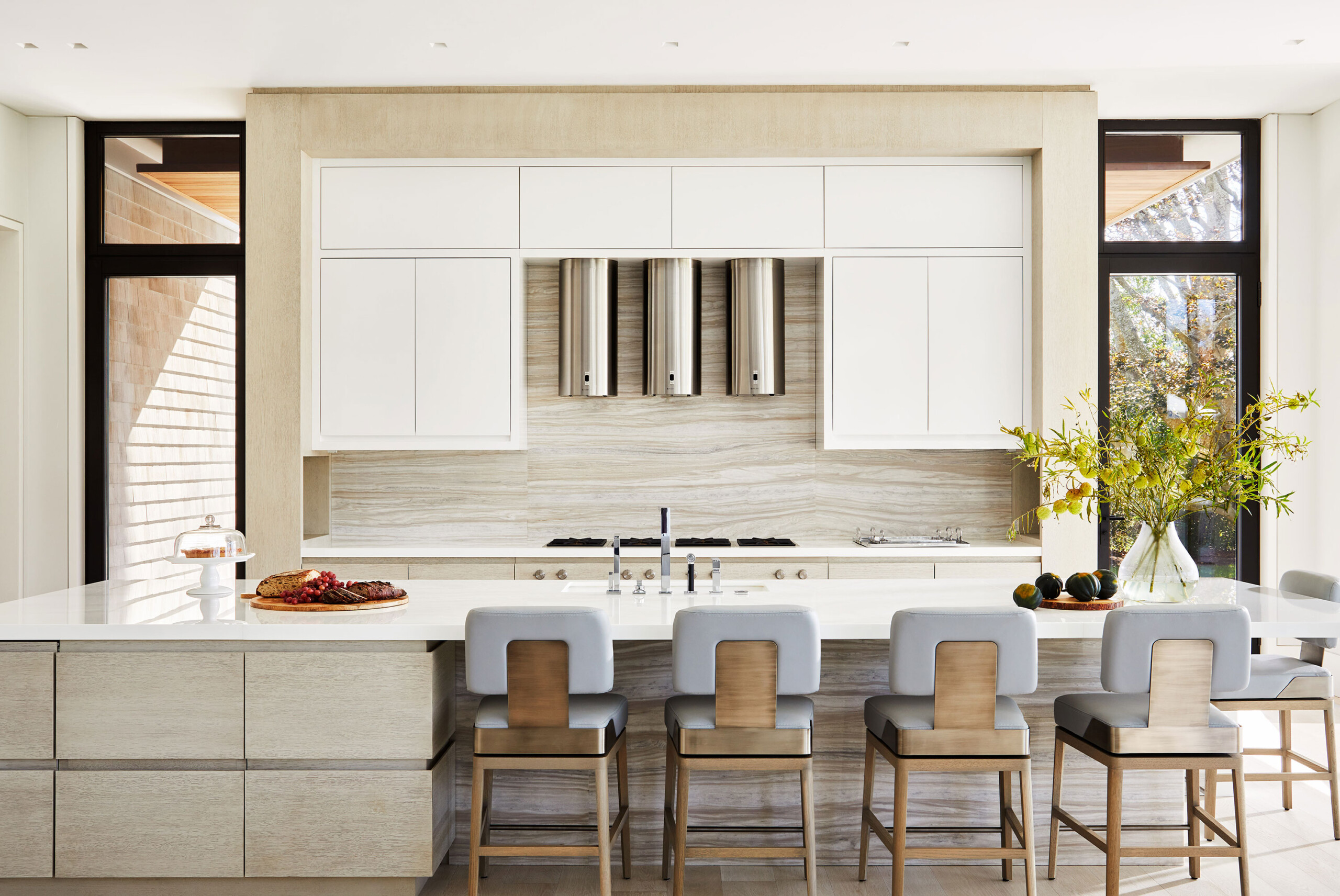Kitchen Backsplash Best Practices
When designing a kitchen, the backsplash is a key design element for consideration. Faced with endless options, it can be overwhelming to choose a design direction. We’ve compiled three ways to think about the directive that may best fit your goals.

1. KEEP IT CONSISTENT
Using the same countertop material as your backsplash is a popular choice when clients want to maintain a cohesive feel for the space. In the case of our Red Mountain kitchen, the striking stone slab selected for the countertops was also used for the backdrop to the stove. This gives the kitchen a featured element while maintaining the consistency of materials.

2. CONSIDER A Pattern
Feeling bold? A patterned tile backsplash can bring a lot of character to a kitchen. The Uptown Eclectic kitchen features open stainless–steel shelving set against the backdrop of a patterned mosaic tile that adds a touch of whimsy while remaining sophisticated and elegant.

3. DECIDE ON A COLOR PALETTE
Choosing a light palette for a kitchen backsplash is a great way to keep the space feeling bright and open. It offers a clean aesthetic, especially when complementing the surrounding materials. In our Southampton Estate project, we integrated a stone backsplash of creams and whites that are in the same tones as the white countertops and light wood base cabinets for a clean and modern look.